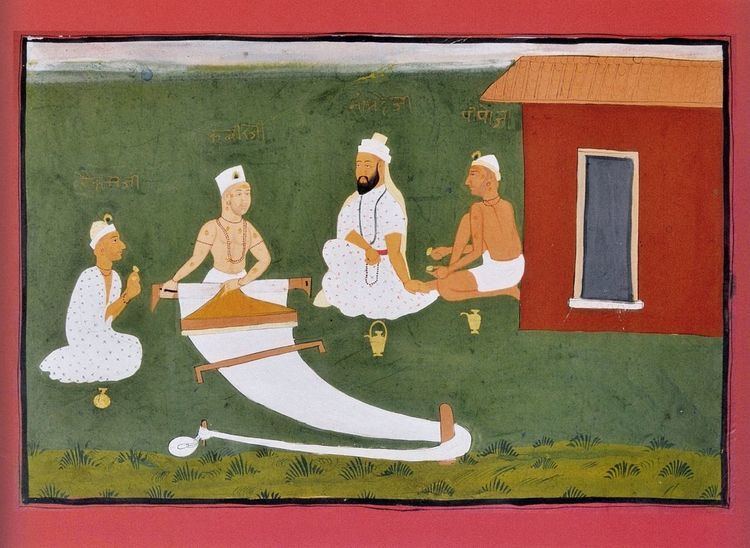 | ||
For the Sindhi performance art see Sindhi bhagat
Bhagat means devotee, and comes from the Sanskrit word Bhakti, which means devotion and love towards God. Indian (northern states): Hindu and Jain name, from modern Indo-Aryan bhagat ‘devotee’, ‘votary’, from Sanskrit bhakta, a derivative of the verb root bhaj- ‘to serve or adore’.
In Hinduism and Sikhism, the Bhagats (Punjabi: ਭਗਤ, from Sanskrit भक्त) were holy men of various sects whose teachings are included in the Sri Guru Granth Sahib.There are 15 Bhagats who are given respect in the Guru Granth Sahib as the Bani of the Ten Sikh Gurus. They evolved a belief in one God that preceded Bhagat Kabir selected the writings of The Great Hindu Bhaktis and Sufi saints. In Hinduism and bhagat Sikhism, the community, which follow the teachings of Bhagat Kabir, they known as Bhagat. In Punjab, Bhagat community having faith in Hindu and Sikh religion. Bhagats having their faith in all the Gurus of Sikhism but they considered Bhagat Kabir is their chief Guru.
In Hinduism, Sikhism a Bhagat (from Sanskrit bhakta) or Sant is a holy person who leads humanity towards God and highlights injustices in the practices of the world. The Sufi Muslim Bhagats lived in Hindu centres and became largely imbued with Hindu spirituality.
Below is the list of these Bhagats included in Sri Guru Granth Sahib:
